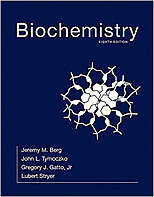
Biochemistry
Berg, Jeremy M.; Tymoczko, John L.; Gatto, Jr., Gregory J.; Stryer, Lubert
8 ed.
New York: W.H. Freeman and Company, 2015
 |
Biochemistry Berg, Jeremy M.; Tymoczko, John L.; Gatto, Jr., Gregory J.; Stryer, Lubert 8 ed. New York: W.H. Freeman and Company, 2015 |
47 termes
| E site n. |
|
| EF-G n. (elongation factor G, translocase) |
|
| EF-hand protein family n. |
|
| EF-Ts n. (elongation factor Ts) |
|
| EF-Tu n. (elongation factor Tu) |
|
| EGF receptor n. |
|
| electrically polarized adj. |
|
| electron transport n. |
|
| electron-proton transfer reaction n. |
|
| electron-transfer potential n. |
|
| electrophoretic analysis n. |
|
| elongation factor G n. (EF-G, translocase) |
|
| elongation factor Ts n. (EF-Ts) |
|
| elongation factor Tu n. (EF-Tu) |
|
| emerging drug n. |
|
| endergonic process n. |
|
| endoplasmic reticulum membrane n. |
|
| endoplasmic reticulum stress n. |
|
| energy coupling agent n. |
|
| energy homeostasis n. (caloric homeostasis) |
|
| energy-conversion pathway n. |
|
| energy-coupling agent n. |
|
| energy-rich molecule n. |
|
| energy-transducing enzyme n. |
|
| enoyl CoA hydratase n. |
|
| enoyl reductase n. |
|
| ensemble study n. |
|
| enzymatic activity n. |
|
| enzyme activation n. |
|
| enzyme-bound n. |
|
| enzyme-bound reactant n. |
|
| enzyme-pyridoxamine phosphate complex n. (E-PMP) |
|
| enzyme-substrate binding n. |
|
| E-PMP n. (enzyme-pyridoxamine phosphate complex ) |
|
| equatorial bond n. |
|
| ER stress n. (endoplasmic reticulum stress) |
|
| error-prone polymerase n. |
|
| ethanol metabolism n. |
|
| eukaryotic cell cycle n. |
|
| eukaryotic promoter element n. |
|
| eukaryotic translation initiation n. |
|
| excess fatty acid n. |
|
| excinuclease n. |
|
| expression cloning n. |
|
| extra arm n. |
|
| extracellular domain n. |
|
| extrinsic pathway n. |
|